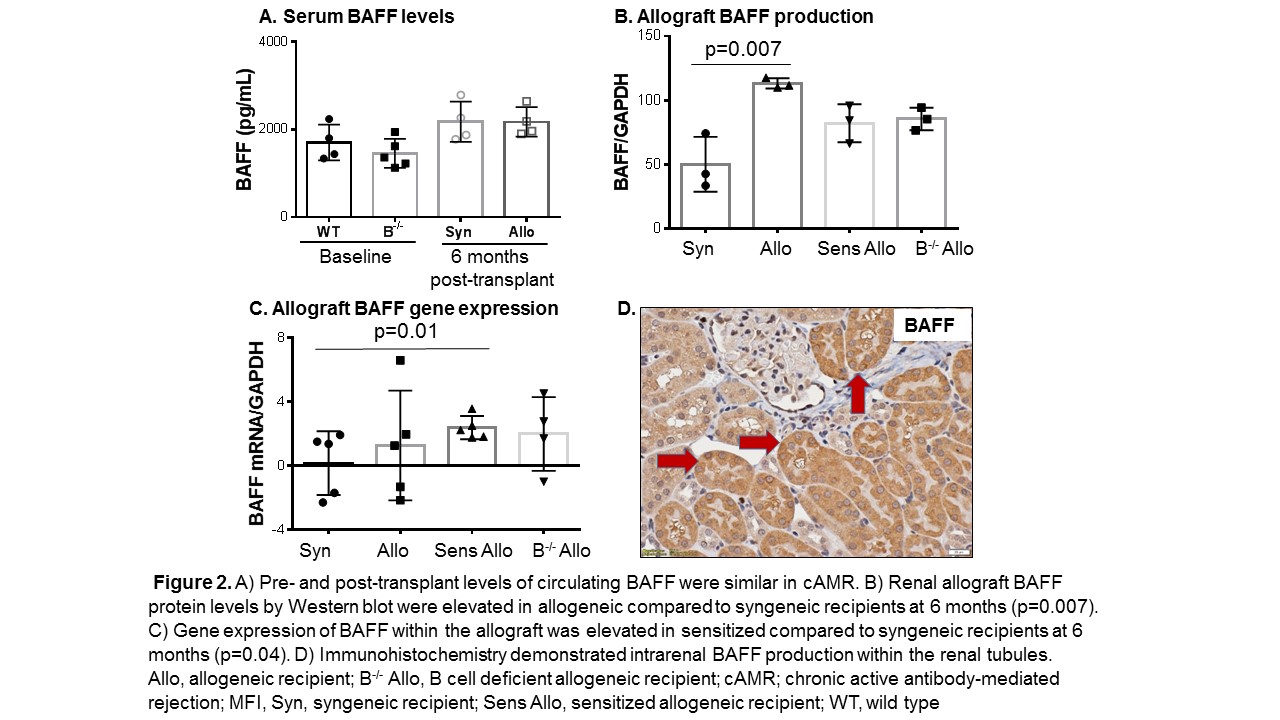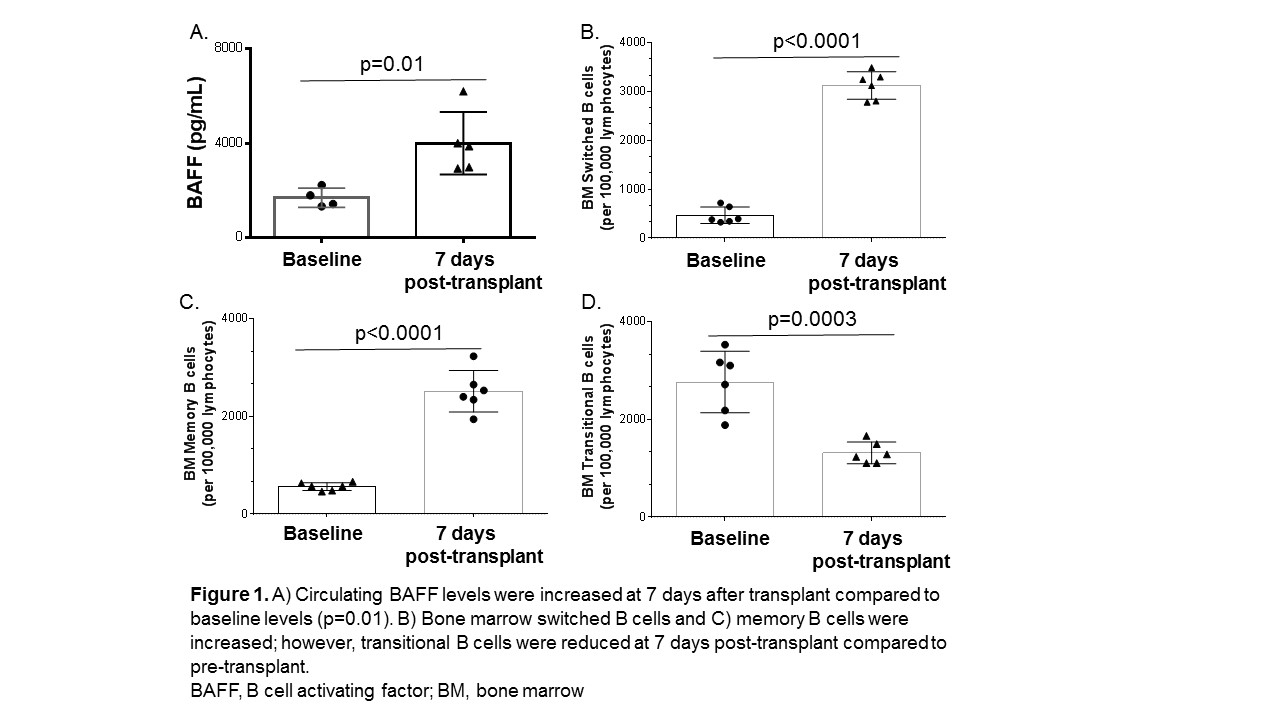Differential Expression of B Cell Activating Factor in Experimental Models of Acute and Chronic Active Antibody-Mediated Rejection
University of Wisconsin Madison, Madison, WI
Meeting: 2019 American Transplant Congress
Abstract number: A34
Keywords: B cells, Kidney transplantation
Session Information
Session Name: Poster Session A: B-cell / Antibody /Autoimmunity
Session Type: Poster Session
Date: Saturday, June 1, 2019
Session Time: 5:30pm-7:30pm
 Presentation Time: 5:30pm-7:30pm
Presentation Time: 5:30pm-7:30pm
Location: Hall C & D
*Purpose: The B cell survival cytokine, BAFF [B cell activating factor], promotes B cell maturation and is a marker of disease activity in a variety of B cell mediated diseases. However, the profile of BAFF in the acute and chronic active antibody-mediated rejection (cAMR) is not well established. We hypothesized BAFF would be elevated in acute rejection and cAMR in a rat kidney transplant model.
*Methods: Major mismatch kidney transplantation was performed to generate acute rejection (Brown Norway to Lewis). Animals were harvested at 1 week. Minor mismatch kidney transplantation was performed to generate cAMR. The cAMR model had four groups: syngeneic (Lewis donor to Lewis recipient), allogeneic (Fisher donor to Lewis recipient), sensitized (Fisher donor to Lewis recipient that received blood transfusion pre-transplant), and B cell deficient recipients (Fisher donor to B-/- Lewis recipient). Animals were harvested at 6 months.
*Results: In acute rejection, circulating BAFF levels were increased at 7 days after transplantation compared to pre-transplant levels (4,007 ± 592 vs 1,703 ± 204 pg/mL, p=0.01, Fig 1). This corresponded to an increase in switched B cells (3,124 ± 115 vs 465 ± 69 cells per 100,000 lymphocytes, p<0.0001) and memory B cells (2,515 ± 174 vs 561 ± 32 cells per 100,000 lymphocytes, p<0.0001) within the bone marrow. In cAMR, there was no difference in circulating BAFF levels pre-transplant compared to 6 months post-transplant (Fig 2). However, intragraft BAFF protein levels were elevated in allogeneic compared to syngeneic recipients (113 ± 3 vs 50 ± 12, p=0.007). Also, BAFF gene expression was elevated in sensitized compared to syngeneic recipients (2.38 ± 0.33 vs 0.16 ± 0.90 fold change, p=0.04).
*Conclusions: We found elevated circulating levels of BAFF in acute rejection and an increase in switched and memory B cells. However, in cAMR renal allograft BAFF levels (protein and gene expression) were elevated, but not circulating levels of BAFF. This indicates BAFF production differs at the systemic and tissue level in acute and cAMR. Further profiling of B cell survival cytokines are needed to evaluate their diagnostic and prognostic abilities in acute and cAMR in kidney transplantation.
To cite this abstract in AMA style:
Reese S, Wilson N, Ptak L, Redfield R, Djamali A, Panzer SE. Differential Expression of B Cell Activating Factor in Experimental Models of Acute and Chronic Active Antibody-Mediated Rejection [abstract]. Am J Transplant. 2019; 19 (suppl 3). https://atcmeetingabstracts.com/abstract/differential-expression-of-b-cell-activating-factor-in-experimental-models-of-acute-and-chronic-active-antibody-mediated-rejection/. Accessed December 24, 2025.« Back to 2019 American Transplant Congress


